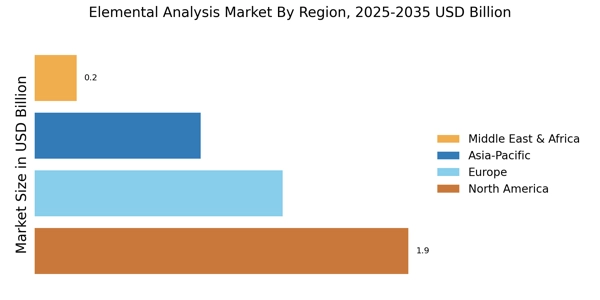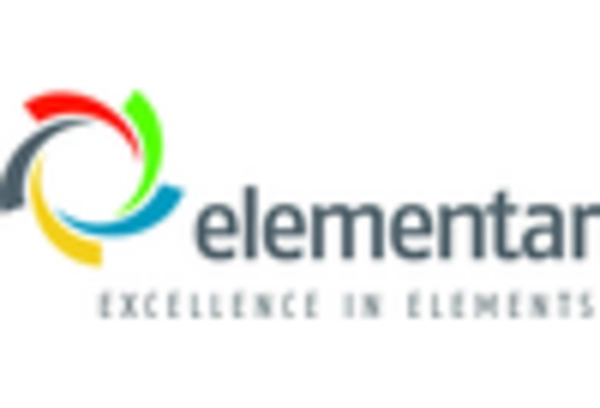Increased Focus on Food Safety
The Elemental Analysis Market is witnessing a surge in demand driven by the increasing focus on food safety and quality assurance. Consumers are becoming more conscious of the nutritional content and safety of their food, prompting regulatory agencies to enforce stringent testing protocols. Elemental analysis plays a crucial role in detecting harmful substances such as heavy metals and contaminants in food products. The food safety testing market is projected to grow significantly, with estimates suggesting it could reach USD 15 billion by 2025. This trend highlights the essential role of elemental analysis in ensuring food safety and compliance with health regulations.
Growth in Pharmaceutical Applications
The Elemental Analysis Market is significantly influenced by the expanding pharmaceutical sector, which increasingly relies on elemental analysis for drug development and quality control. Pharmaceutical companies are mandated to ensure that their products meet stringent safety and efficacy standards, which often involves comprehensive elemental analysis to detect impurities and ensure compliance with regulatory requirements. The pharmaceutical market is anticipated to grow at a CAGR of 5.5% through 2025, further driving the demand for elemental analysis services. This trend underscores the critical role that elemental analysis plays in maintaining product integrity and safety in the pharmaceutical industry.
Rising Demand in Environmental Testing
The Elemental Analysis Market is experiencing a notable increase in demand for environmental testing services. This surge is primarily driven by heightened awareness regarding environmental pollution and its impact on public health. Regulatory bodies are imposing stricter guidelines for monitoring pollutants in air, water, and soil, necessitating advanced elemental analysis techniques. For instance, the market for environmental testing is projected to reach USD 20 billion by 2026, indicating a robust growth trajectory. As industries strive to comply with these regulations, the need for precise elemental analysis becomes paramount, thereby propelling the market forward.
Advancements in Analytical Technologies
Technological innovations are reshaping the Elemental Analysis Market, with advancements in analytical techniques such as inductively coupled plasma mass spectrometry (ICP-MS) and X-ray fluorescence (XRF) enhancing the accuracy and efficiency of elemental analysis. These technologies enable the detection of trace elements at unprecedented levels, catering to the needs of various sectors including food safety, environmental monitoring, and materials science. The introduction of automated systems and real-time analysis capabilities is expected to further streamline processes, making elemental analysis more accessible and efficient. As these technologies evolve, they are likely to attract new investments and expand the market's reach.
Emerging Applications in Material Science
The Elemental Analysis Market is expanding into new territories, particularly in material science, where elemental analysis is essential for characterizing materials and ensuring their performance. Industries such as aerospace, automotive, and electronics are increasingly utilizing elemental analysis to assess material properties and detect defects. The demand for high-performance materials is driving innovation and research in this field, with the material science market expected to grow at a CAGR of 6% through 2025. This growth presents significant opportunities for the elemental analysis sector, as it becomes integral to the development and testing of advanced materials.


















Leave a Comment